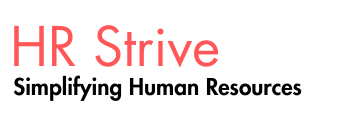The environmental scanning process is systematized by searching for environmental forces organized under specific categories. This process is commonly referred to as a PESTLE analysis for political, economic, social, technological, legal, and environmental categories.
- Assemble a list of possible events or trends that exist now or could materialize within a defined time frame. This could be done through brainstorming meetings, interviews or focus groups with experts in certain areas, or literature reviews.
- Identify the potential impacts on the organization. These should include positive and negative or immediate and long-range effects. Analysts should also look for possible ripple effects on apparently unconnected processes or parts of the organization.
- Research the impacts more thoroughly to understand possible causes, their dimensions, and connections with other events or trends. For example, trending information may be obtained from government agencies or industry associations
- Assess the importance of the possible impacts based on the strength of the date.
Exhibit traces the way in which events or trends that have been identified through PESTLE analysis might affect an enterprise and HR. Note that each of these categories can include unique ethical considerations. For example, political analysis may include examining levels of corruption.
PESTLE Analysis
|
Category |
Possible
Enterprise |
Possible HR
Impact |
|
|
Political (influences of government policies, laws,
and regulations) |
|||
|
·
Regulation environment and actions ·
Taxation policies ·
Treaties and tariff structures ·
Immigration policies ·
Governance legislation ·
Government stability ·
Levels of corruption |
An organization's
leaders are debating expanding the business into a country because corruption
and bribery make it difficult to do business there. |
The company decides
to go ahead, and HR considers what guidance to provide to those who will be
working in this country and those who will be assessing these employees'
performance. |
|
|
Economics |
|||
|
·
Business forecasts ·
Labor availability and cost ·
Price for services and materials
(inflation/deflation rates) ·
Household income ·
Consumer confidence ·
Availability and cost of capital ·
Income disparities |
Expansion plans
could be curtailed by signs of increased costs of financing or difficulty in
obtaining investment. |
A business case
analyzing the purchase of a new HR information system could emphasize the
savings in interest by making the purchase now. |
|
|
Social |
|||
|
·
Demographic
shifts in age, ethnic background ·
Education and
skills profiles ·
Housing
patterns ·
Patterns of
discrimination ·
Family
structure ·
Values ·
Lifestyles and
purchasing habits ·
Media use ·
Effect of
globalization on local culture |
The organization
channels an increasingly large portion of its marketing budget into social
media aimed at a growing youth demographic. |
HR must assess its
policies and implement monitoring to make sure that social media are used in
an equitable manner for recruiting and that employees know what social media
activity conforms to company policy. |
|
|
Technological |
|||
|
New centers of
technological training and expertise • Innovative technology and applications
of technology • Unequal access to
technology • New or changing technical standards • Technological
vulnerability |
The organization may
have to invest more heavily in data security measures. |
HR has to review its
recruiting program to identify and attract new sources of highly skilled
workers in this area. |
|
PESTLE Analysis (Continued)
|
Category |
Possible Enterprise |
Possible HR Impact |
|
|
Legal |
|||
|
·
Trends in
patent law and intellectual property protection ·
Increased civil
litigation in workplaces ·
Increased
shareholder legal actions ·
Unequal access
to legal representation ·
Trends in
evidence requirements and penalties ·
Increased cost
for defense ·
Trends in
findings for corporate negligence |
Senior management
increases its budget for legal services and its risk contingency reserves
earmarked for legal issues. |
HR strengthens risk
management against legal vulnerabilities (for example, compliance checklists
and audits, use of alternative dispute resolution). |
|
|
Environmental |
|||
|
·
Decreasing
carbon consumption limits ·
Increased use
of alternative-fuel vehicles ·
Need for
innovative technology and practices to decrease use of resources or
environmental impact ·
Unequal effect
of environmental damage or policies ·
Vulnerability
of reliable and potable water supplies ·
Increased
interest in environmental impact |
The organization may
have a corporate social responsibility strategy that includes environmental goals. |
HR can use the
corporate social responsibility strategy in the organization's employment brand
to attract workers. |
|

No comments:
Post a Comment